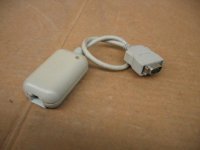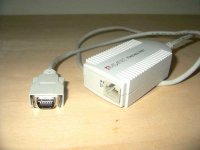gsteemso
Well-known member
I bought what turned out to be a matched pair of extremely basic Farallon AAUI adapters, unlabelled with any kind of model number either inside or out, off eBay a year or two back (maybe they just wanted rid of them so gave me two for one?), and was dismayed that I could not get them to work with any of my supposedly 10bT-compatible networking gear. A friend in the Seattle Retro-Computing Society later told me that those things vary from model to model and maker to maker in how they will interact with newer, faster hubs or switches, and generously gave me one that actually works (an Asanté FriendlyNet unit, as it happens).
Recent Googling turned up a few hints that something may be going awry with the unusable models of AAUI pod when they try to negotiate link parameters with a newer-model Ethernet switch, but no one seems to have any source on which to base this supposition, nor was I able to learn anything more detailed about it.
Does anyone know more about this subject? Many questions come to mind. For example: Are there certain models of AAUI adapter that are known to work, or not work, other than the two I’ve already mentioned? Does it depend on what brand of 10/100 or 10/100/1000 switch you use? (Mine, purely by coincidence, are all Netgear switches—not a mere hub among them. That company makes pretty reliable equipment in my limited experience, at least the business-grade stuff.) Are there any models of plain 10bT switch or hub that, like their newer and faster cousins, won’t work either? Are all AAUI-equipped Macs equal in this regard? What exactly is going hinky with the not-working AAUI adapters that makes you have to dig up a plain-Jane 10bT switch from somewhere to interpose between them and the faster parts of your network? I could go on, but I think that’s a good start.
Recent Googling turned up a few hints that something may be going awry with the unusable models of AAUI pod when they try to negotiate link parameters with a newer-model Ethernet switch, but no one seems to have any source on which to base this supposition, nor was I able to learn anything more detailed about it.
Does anyone know more about this subject? Many questions come to mind. For example: Are there certain models of AAUI adapter that are known to work, or not work, other than the two I’ve already mentioned? Does it depend on what brand of 10/100 or 10/100/1000 switch you use? (Mine, purely by coincidence, are all Netgear switches—not a mere hub among them. That company makes pretty reliable equipment in my limited experience, at least the business-grade stuff.) Are there any models of plain 10bT switch or hub that, like their newer and faster cousins, won’t work either? Are all AAUI-equipped Macs equal in this regard? What exactly is going hinky with the not-working AAUI adapters that makes you have to dig up a plain-Jane 10bT switch from somewhere to interpose between them and the faster parts of your network? I could go on, but I think that’s a good start.



